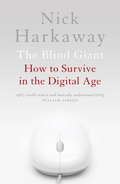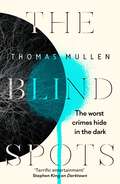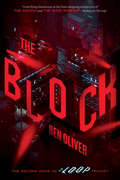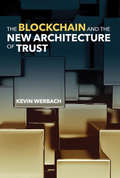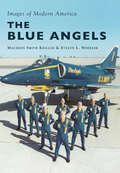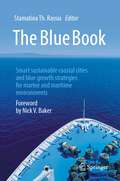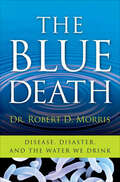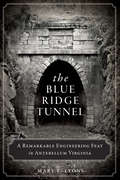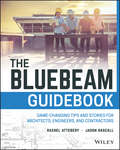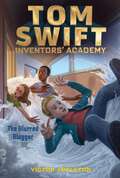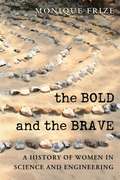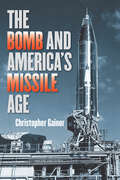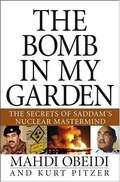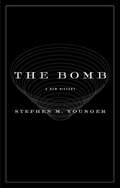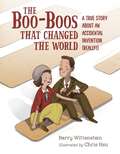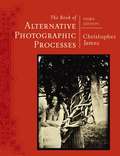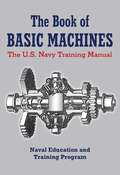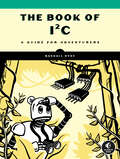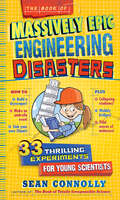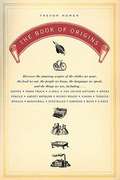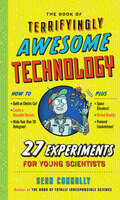- Table View
- List View
The Blind Giant: How to Survive in the Digital Age
by Nick HarkawayThe digital age. An age of isolation, warped communication, disintegrating community. Where unfiltered and unregulated information pours relentlessly into our lives, destroying what it means to be human. Or an age of marvels. Where there is a world of wonder at our fingertips. Where we can communicate across the globe, learn in the blink of an eye, pull down the barriers that divide us and move forward together. Whatever your reaction to technological culture, the speed with which our world is changing is both mesmerising and challenging. In The Blind Giant, novelist and tech blogger Nick Harkaway draws together fascinating and disparate ideas to challenge the notion that digital culture is the source of all our modern ills, while at the same time showing where the dangers are real and suggesting how they can be combated. Ultimately, the choice is ours: engage with the machines that we have created, or risk creating a world which is designed for corporations and computers rather than people. This is an essential handbook for everyone trying to be human in a digital age.
The Blind Giant: How to Survive in the Digital Age
by Nick HarkawayThe digital age. An age of isolation, warped communication, disintegrating community. Where unfiltered and unregulated information pours relentlessly into our lives, destroying what it means to be human. Or an age of marvels. Where there is a world of wonder at our fingertips. Where we can communicate across the globe, learn in the blink of an eye, pull down the barriers that divide us and move forward together. Whatever your reaction to technological culture, the speed with which our world is changing is both mesmerising and challenging. In The Blind Giant, novelist and tech blogger Nick Harkaway draws together fascinating and disparate ideas to challenge the notion that digital culture is the source of all our modern ills, while at the same time showing where the dangers are real and suggesting how they can be combated. Ultimately, the choice is ours: engage with the machines that we have created, or risk creating a world which is designed for corporations and computers rather than people. This is an essential handbook for everyone trying to be human in a digital age.
The Blind Spots: The highly inventive near-future detective mystery from the acclaimed author of Darktown
by Thomas MullenFrom the acclaimed author of Darktown comes the most inventive crime novel since Minority Report.'It's rare to find a thriller with such a fantastic and original concept. I was gripped' --- Anthony HorowitzIn a world where a global event has blinded every person on the planet, one detective seeks a murderer who should not, cannot, exist.Seven years ago, everyone in the world went blind in a matter of months. Technology helped people adjust to the new normal, creating a device that approximates vision, downloading visual data directly to people's brains. But what happens when someone finds a way to manipulate it and change what people see?Homicide detective Mark Owens has been on the force since before The Blinding. When a scientist is murdered, and the only witness insists the killer was blacked out of her vision, Owens doesn't believe her - until a similar murder happens in front of him. With suspects ranging from tech billionaires to anti-modernity cultists, Owens must conduct an investigation in which he can't even trust his own eyes...PRAISE FOR THOMAS MULLEN'Terrific entertainment' - Stephen King'Superb' - Ken Follett'Magnificent and shocking' - Sunday Times'Written with a ferocious passion that'll knock the wind out of you' - New York Times'Fascinating, grim and unsettling' - Guardian'A terrific story' - The Times'From the very first page of Darktown, I was stunned, mesmerized' - Attica Locke
The Block (The Loop)
by Ben OliverIn the second book of The Loop trilogy, Luka is trapped in a fate worse than death. But now that he knows the truth about what he and his fellow inmates are being used for, it's more important than ever that he not only escapes, but that he builds an army.Luka is a prisoner once again. But this time it's a fate worse than death. In the Block, he must toggle between enduring an Energy Harvest for twelve hours of the day and surviving complete immobilization. The only semblance of relief is the Sane Zone, created to keep prisoners from going completely mad. In this virtual reality, the prisoners live out their fantasies of life outside. But for Luka, it's different.Happy is determined to find out the location of his friends, who disappeared after the Battle of Midway Park. But can Luka battle the descent into madness long enought to stop Happy's manipulation tactics and keep his friends' location safe?Another prison break is the only chance to protect the Missing. And as reality becomes increasingly scrambled on the outside, it'll take an army to stop Galen from carrying out his plans.
The Blockchain and the New Architecture of Trust (Information Policy)
by Kevin WerbachHow the blockchain—a system built on foundations of mutual mistrust—can become trustworthy.The blockchain entered the world on January 3, 2009, introducing an innovative new trust architecture: an environment in which users trust a system—for example, a shared ledger of information—without necessarily trusting any of its components. The cryptocurrency Bitcoin is the most famous implementation of the blockchain, but hundreds of other companies have been founded and billions of dollars invested in similar applications since Bitcoin's launch. Some see the blockchain as offering more opportunities for criminal behavior than benefits to society. In this book, Kevin Werbach shows how a technology resting on foundations of mutual mistrust can become trustworthy. The blockchain, built on open software and decentralized foundations that allow anyone to participate, seems like a threat to any form of regulation. In fact, Werbach argues, law and the blockchain need each other. Blockchain systems that ignore law and governance are likely to fail, or to become outlaw technologies irrelevant to the mainstream economy. That, Werbach cautions, would be a tragic waste of potential. If, however, we recognize the blockchain as a kind of legal technology that shapes behavior in new ways, it can be harnessed to create tremendous business and social value.
The Blue Angels (Images of Modern America)
by Maureen Smith Keillor Evelyn L. WheelerEvery year, more than 11 million people attend air shows that feature the Blue Angels, who call Pensacola, Florida, their home. The Navy's Flight Demonstration Team, with its six gleaming blue-and-gold F/A-18 Hornets, never fails to thrill the crowds. Flying from heights of over 15,000 feet and dropping as low as 50 feet, the shows are nonstop, high-energy, heart-stopping excitement. The Blue Angels were established in 1946 by Adm. Chester W. Nimitz to "showcase the pride and professionalism of the United States Navy and Marine Corps by inspiring a culture of excellence and service to country through flight demonstrations and community outreach." The Blue Angels pilots and flight crew visit 50,000 people a year in schools, hospitals, and other community events, in addition to performing for those who attend their air shows.
The Blue Book: Smart sustainable coastal cities and blue growth strategies for marine and maritime environments
by Stamatina Th. RassiaThis volume offers a wealth of results written by experts from interdisciplinary fields, contributing on a diversity of topics targeting marine and maritime environmental sustainability in coastal and ocean-related areas. The reader will benefit from the diversity and breadth of topical coverage as well as concepts conveyed from a variety researchers. The book serves as an open knowledge platform combining many aspects of SDG #11 including naval architecture and marine engineering, ecology, biomedical informatics, public health, architecture engineering and building physics, nanotechnology as well as advanced technologies, innovation and related fields. The broad range of topics cover ecology, shipping, and health related issues. Specifically, the book presents chapters on the following: · Shipping and ecology · Topics of ocean wildlife and mega-fauna protection · Big Data and sustainable applications for healthy and safe coastal cities · Smart sustainable humanitarian assistance methods using large vessels · Smart coastal city tourist activity, mobility management · Urban climate condition mitigation · Historical analysis of the case of disease outbreaks onboard ships · Monitoring, simulating and decision making while developing housing at sea, such as in cruise-ships · Conducting feasibility assessment for outbreak prevention following real-time, systematic disease detection on cruise ships · Technological approaches for cruise ship disease propagation monitoring · Scenario testing for sensors and actuators deployment to prevent and mitigate epidemics on cruise ships, as well as methods for improving biological safety on ships using nanotechnology The book is expected to engage researchers in multidisciplinary areas as well as students and interested readers.
The Blue Death: Disease, Disaster, and the Water We Drink
by Robert D. MorrisA public health expert warns about the safety of our water supply and “recounts, with crystal clarity, some of history’s epic drinking water disasters” (Booklist, starred review).A Library Journal Best Consumer Health Book of the YearIn this book, Dr. Robert Morris chronicles the fascinating and at times frightening story of our drinking water. His gripping narrative recounts the epidemics that have shaken cities and nations, the scientists who reached into the invisible and emerged with controversial truths that would save millions of lives, and the economic and political forces that opposed these researchers in a ferocious war of ideas.In the gritty world of nineteenth-century England, amid the ravages of cholera, Morris introduces John Snow, the physician who proved that the deadly disease could be hidden in a drop of water. Decades later in the deserts of Africa, the story follows Louis Pasteur and Robert Koch as they race to find the cause of cholera and a means to prevent its spread. In the twentieth century, burgeoning cities would subdue cholera and typhoid by bending rivers to their will, building massive filtration plants, and bubbling poisonous gas through their drinking water. However, in the new millennium, the demon of waterborne disease is threatening to reemerge, and a growing body of research has linked the chlorine relied on for water treatment with cancer and stillbirths.In The Blue Death, Morris dispels notions of fail-safe water systems and reveals some shocking truths: the millions of miles of leaking water mains, constantly evolving microorganisms, and the looming threat of bioterrorism, which may lead to catastrophe. Across time and around the world, this account offers alarming information about the natural and man-made hazards present in the very water we drink.“While casual readers don’t generally pick up public health books expecting to stay up late turning pages, Morris manages a neat trick—he provides an in-depth medical history that at times reads like a mystery.” —San Francisco Chronicle Book Review“Engrossing and disquieting.” —Publishers Weekly“Morris approaches water systems like an engineers, disease outbreaks like an epidemiologist, and the people and events behind waterborne disasters like an investigative reporter . . . The effect is riveting.” —Kirkus Reviews (starred review)
The Blue Ridge Tunnel: A Remarkable Engineering Feat in Antebellum Virginia (Transportation)
by Mary E. LyonsThe true story of the construction of the historic Crozet railroad tunnel—as seen through the eyes of three Irish immigrant families who helped build it.In one of the greatest engineering feats of the time, Claudius Crozet led the completion of Virginia’s Blue Ridge Tunnel in 1858. More than a century and a half later, the tunnel stands as a National Historic Civil Engineering Landmark, but the stories and lives of those who built it are the true lasting triumph. Irish immigrants fleeing the Great Hunger poured into America resolved to find something to call their own. They would persevere through life in overcrowded shanties and years of blasting through rock to see the tunnel to completion. In this intriguing history, Mary E. Lyons follows three Irish families in their struggle to build Crozet’s famed tunnel—and their American dream.Includes photos and illustrations
The Bluebeam Guidebook: Game-changing Tips and Stories for Architects, Engineers, and Contractors
by Rachel Attebery Jason HascallExpert tips for the last piece in the paperless puzzle The Bluebeam Guidebook offers comprehensive coverage of the industry’s leading PDF tool to help AEC professionals adopt a more efficient digital workflow. With desktop, mobile, and server-based products, Bluebeam makes collaboration and document coordination seamless, and provides a perfect complement to BIM software. This book shows you how to push the boundaries and discover the software’s true capabilities. Written expressly for working AEC professionals, this book offers tips, tricks, and ideas that cater to industry-specific needs. Expert instruction and step-by-step guidance helps you get started quickly, and case studies feature users from firms such as Kiewit, Populus, Sundt Construction, and more to show you how Bluebeam is quickly becoming a critical component of design and construction. Master the industry’s leading PDF software and alternative to Adobe Acrobat Create, edit, and markup documents in a way that suits the architecture and engineering workflow Learn how major AEC firms have transitioned seamlessly to digital workflows Integrate Bluebeam into estimating, quality control, field applications, and more The days of file boxes and paper reams are quickly coming to a close. The transition to paperless has been a boon for the AEC industry, in which collaboration and document sharing is central to getting the job done. BIM has revolutionized the design process, and Bluebeam offers that same level of functional innovation for the document side of every project. For AEC professionals seeking a better way to get things done, The Bluebeam Guidebook is your ultimate guide to everything Bluebeam can do for you.
The Blurred Blogger (Tom Swift Inventors' Academy #7)
by Victor AppletonTom and his friends track down a mysterious blogger who pushes pranks too far in this seventh novel in Tom Swift Inventors&’ Academy—perfect for fans of The Hardy Boys or Alex Rider series.A series of videos called &“The Not-so-Swift Academy&” are the talk of Tom Swift&’s tech-focused school. A mysterious host whose face is blurred shows hidden camera footage of different students being pranked—from a rubber tarantula leaping out of one of the terrariums to water flash freezing. Tom and his classmates are on edge, wondering which unlucky student will be the star of the next episode. They&’re on the lookout for hidden cameras and searching for signs of the next prank around every corner and behind every locker door. Tired of the tension, Sam decides to take matters in her own hands. She&’s going to bust the blogger by studying the videos for clues. But as Sam pieces the clues together, she unveils the biggest prank of all—someone&’s trying to frame her for the videos! Can Tom and his friends unmask the blurred blogger and clear Sam&’s name before they become the targets of the prankster&’s increasingly nefarious stunts?
The Boat Alphabet Book (Jerry Pallotta's Alphabet Books)
by Jerry PallottaAhoy, mateys! Get on board! Boats and the need for them have been around for thousands of years. Reed boats might have been the first boat ever to be built. The Vikings built wooden ships that were strong and ornate. And now boats like an Aircraft Carrier house 6,000 people and can carry over 100 planes. In Jerry Pallotta's newest book we get to see an entire alphabet of floating wonders. David Biedrzycki has provided dramatic settings for a variety of boats and captures the mood of each body of water. In one he paints a calm lake where a red canoe glides across the water and in another the stormy swells of an angry ocean tossing a three-masted Xebec. The facts about each boat are sprinkled with traditional Pallotta humor.
The Bold and the Brave: A History of Women in Science and Engineering
by Monique FrizeThe Bold and the Brave investigates how women have striven throughout history to gain access to education and careers in science and engineering. Author Monique Frize, herself an engineer for over 40 years, introduces the reader to key concepts and debates that contextualize the obstacles women have faced and continue to face in the fields of science and engineering. She focuses on the history of women’s education in mathematics and science through the ages, from antiquity to the Enlightenment. While opportunities for women were often purposely limited, she reveals how many women found ways to explore science outside of formal education. The book examines the lives and work of three women –Sophie Germain, Mileva Einstein, and Rosalind Franklin – that provide excellent examples of how women’s contributions to science have been dismissed, ignored or stolen outright. She concludes with an in-depth look at women’s participation in science and engineering throughout the twentieth century and the current status of women in science and engineering, which has experienced a decline in recent years. To encourage more young women to pursue careers in science and engineering she advocates re-gendering the fields by integrating feminine and masculine approaches that would ultimately improve scientific and engineering endeavours.
The Boletes of China: Tylopilus s.l.
by Yan-Chun Li Zhu L. YangThis book introduces the Chinese boletes, including the history, ecological and economic values, as well as the geographical distribution patterns with a highlight on the Tylopilus species. Species in Tylopilus s.l. are not only of important ecological values but also of scientific interests. They are very diverse in morphology, complex in structure and wide in ecological niches. China is one of the diverse hotspots of boletes, and many boletes were traditionally treated as members of Tylopilus based on hymenophore or spore-print colour. The studies revealed that the traditionally defined Tylopilus is polyphyletic. This book aims to elucidate the phylogenetic relationships among the genera treated in Tylopilus s.l. previously; to delimit and recognize the taxa, and finally to reveal the diversity of the genera and species of Tylopilus s.l. in China. The book is intended to be a reference for biologists who conduct investigations of biological resources and biodiversity; university and college teachers and students carrying out studies in related fields; mycologists and amateur mycologists, or people who interested in mushrooms taxonomy and systematics; and workers in the development of non-timber forest products.
The Bomb and America's Missile Age (The Johns Hopkins University Studies in Historical and Political Science #133)
by Christopher GainorHow nuclear weapons helped drive the United States into the missile age.The intercontinental ballistic missile (ICBM), designed to quickly deliver thermonuclear weapons to distant targets, was the central weapons system of the Cold War. ICBMs also carried the first astronauts and cosmonauts into orbit. More than a generation later, we are still living with the political, technological, and scientific effects of the space race, while nuclear-armed ICBMs remain on alert and in the headlines around the world.In The Bomb and America’s Missile Age, Christopher Gainor explores the US Air Force’s (USAF) decision, in March 1954, to build the Atlas, America’s first ICBM. Beginning with the story of the guided missiles that were created before and during World War II, Gainor describes how the early Soviet and American rocket programs evolved over the course of the following decade. He argues that the USAF was wrongly criticized for unduly delaying the start of its ICBM program, endangering national security, and causing America embarrassment when a Soviet ICBM successfully put Sputnik into orbit ahead of any American satellite. Shedding fresh light on the roots of America’s space program and the development of US strategic forces, The Bomb and America’s Missile Age uses evidence uncovered in the past few decades to set the creation of the Atlas ICBM in its true context—not only in the America of the postwar years but also in comparison with the real story of the Soviet missiles that propelled the space race and the Cold War. Aimed at readers interested in the history of the Cold War and of space exploration, the book makes a major contribution to the history of rocket development and the nuclear age.
The Bomb in My Garden: The Secrets of Saddam's Nuclear Mastermind
by Mahdi Obeidi Kurt PitzerObeidi, the former director-general of Iraq's Ministry of Industry and Military Industrialization under Saddam Hussein, was involved in Iraq's quest for a nuclear bomb beginning in the late 1970s. In this memoir, he tells his story of his work in the program, describing how the efforts came to a halt after the first Gulf War, and how he watched as the U. S. used allegations he knew were false to justify the invasion of his country. In many parts, the story is as much personal as professional as he worries about the fate of his family in difficult times.
The Bomb: A New History
by Steven M. YoungerA former Los Alamos weapons designer shares “an indispensable guide to the science and strategy of nuclear weapons” (Booklist).From his years at Los Alamos and the Nevada Test Site to his meetings with nuclear arms experts in Moscow, former weapons designer Stephen M. Younger has witnessed firsthand the making of nuclear policy. With a deep understanding of both the technology and the politics behind nuclear weapons, he guides us from the Manhattan Project to the Cold War and into the present day, illuminating how nuclear weapons fit into our globalized, war-plagued world. With startling clarity, Younger reveals how weapons work, the myths and realities of what happens after a nuclear explosion, and how our nuclear policy evolved to what it is today. In an era when rogue nations like North Korean and Iran strive to create their own precarious weapons programs, Younger provides much-needed background and insight for students, policy makers, and readers who wish to better understand the important issues involving nuclear weapons and national security.“Younger has provided an insightful guide, especially for the general reader, into today’s array of nuclear powers and their capabilities.” —James Schlesinger, former Secretary of Defense and Secretary of Energy
The Boo-Boos That Changed the World: A True Story About an Accidental Invention (Really!)
by Barry WittensteinDid you know Band-Aids were invented by accident?! And that they weren't mass-produced until the Boy Scouts gave their seal of approval?1920s cotton buyer Earle Dickson worked for Johnson & Johnson and had a klutzy wife who often cut herself. The son of a doctor, Earle set out to create an easier way for her to bandage her injuries. Band-Aids were born, but Earle's bosses at the pharmaceutical giant weren't convinced, and it wasn't until the Boy Scouts of America tested Earle's prototype that this ubiquitous household staple was made available to the public. Soon Band-Aids were selling like hotcakes, and the rest is boo-boo history."Appealingly designed and illustrated, an engaging, fun story" — Kirkus Reviews STARRED REVIEW
The Book of Alternative Photographic Processes (3rd Edition)
by Christopher JamesA complete and comprehensive technical and aesthetic resource, exploring and delving into every aspect of alternative photographic process photography. This 3rd Edition is the definitive text for students and professionals studying alternative photographic processes and the art of hand-made photographic image making. The text brings the medium up to date with new and historic processes that are integrated with the latest contemporary innovations, adaptations, techniques, and art work.
The Book of Basic Machines: The U.S. Navy Training Manual
by U. S. NavyHave you ever wondered why levers and pulleys make it easy to lift heavy objects? Or thought about what it is that makes a combustion engine work?The Book of Basic Machines will give you the information you need to understand key concepts, techniques, components, and much more. Designed and prepared by the Naval Education and Training Program Development Center for naval training, and taught widely in technical school across the country, the manual covers the theory and application of many of the most important mechanical ideas. Concepts build effortlessly from one chapter to the next. Clear explanations, illuminating examples, and over 200 skillfully rendered diagrams, cross-sections, and illustrations make it remarkably easy for readers of any level to understand the fascinating inner-workings of basic machines. The Book of Basic Machines is an invaluable resource for mechanical engineering students looking to learn the basics, working engineers wanting to brush up on some theory, or hobbyists who simply want to know how things work. Simply put, this book is required reading for anyone interested in machines. From the basics of simple levers to the principles of the internal combustion engine, The Book of Basic Machines covers every aspect of basic machinery.
The Book of I²C: A Guide for Adventurers
by Randall HydeAn extensive practical guide to connecting real-world devices to microcontrollers with the popular I2C bus.If you work with embedded systems, you&’re bound to encounter the ubiquitous Inter-Integrated Circuit bus (IIC or I2C) – a serial protocol for connecting integrated circuits in a computer system. In The Book of I2C, the first comprehensive guide to this bus, bestselling author Randall Hyde draws on 40 years of industry experience to get you started designing and programming I2C systems. Aided by over 100 detailed figures and annotated source-code listings, you&’ll learn the I2C implementations of systems like Arduino, Teensy, and Raspberry Pi, as well as variants of the I2C and common I2C peripheral ICs complete with programming examples. For hardware hackers, electronics hobbyists, and software engineers of every skill level, the extensive coverage in this book will make it a go-to reference when it comes to connecting real-world devices to I2C microcontrollers.
The Book of Massively Epic Engineering Disasters: 33 Thrilling Experiments Based on History's Greatest Blunders (Irresponsible Science)
by Sean ConnollyIt’s hands-on science with a capital “E”—for engineering. Beginning with the toppling of the Colossus of Rhodes, one of the seven wonders of the ancient world, to the destructive, laserlike sunbeams bouncing off London’s infamous “Fryscraper” in 2013, here is an illustrated tour of the greatest engineering disasters in history, from the bestselling author of The Book of Totally Irresponsible Science. Each engineering disaster includes a simple, exciting experiment or two using everyday household items to explain the underlying science and put learning into action. Understand the Titanic’s demise by sinking an ice-cube-tray ocean liner in the bathtub. Stomp on a tube of toothpaste to demonstrate what happens to non-Newtonian fluids under pressure—and how a ruptured tank sent a tsunami of molasses through the streets of Boston in 1919. From why the Leaning Tower of Pisa leans to the fatal design flaw in the Sherman tank, here’s a book of science at its most riveting.
The Book of Origins: Discover the Amazing Origins of the Clothes We Wear, the Food We Eat, the People We Know, the Languages We Speak, and the Things We Use
by Trevor HomerEverything—from the mundane (the pencil) to the catastrophic (the atom bomb)—has an origin, but often it&’s not what we expect. A few things you may not have known: • Gandhi was married at age thirteen! • Chinese fortune cookies are an American invention and were not eaten in China until the 1990s when they were advertised as &“Genuine American Fortune Cookies.&” • Bayer lost the trademark for aspirin (which they had held since 1897) as part of the reparations Germany was forced to pay after World War I. • The original idea for the electric chair came from an American dentist. For aspiring mindblowers and wanna-be know-it-alls, The Book of Origins is a treasure trove of trivia and fascinating facts guaranteed to entertain and enlighten.
The Book of Terrifyingly Awesome Technology: 27 Experiments for Young Scientists (Irresponsible Science)
by Sean ConnollySean Connolly’s bestselling “genius at work” series gets its “T!” STEM, standing for Science, Technology, Engineering, and Mathematics, refers to the core non-humanities subjects that are so critical to contemporary education. And now, after covering everything but the technology, this master of fun, messy, possibly risky and compelling interactive science experiments explores twenty-seven key areas in current and near-future tech. Author of The Book of Totally Irresponsible Science, The Book of Massively Epic Engineering Disasters, and, most recently, The Book of Ingeniously Daring Chemistry Sean Connolly delves into the fascinating and potentially scary world of driverless cars, artificial intelligence, robots and androids, smart clothing, the “internet of things,” test-tube meat, the space elevator, and more. Through cool illustrations, quick definitions, illustrated panels, and Connolly's clear and always-lively writing, readers learn what each breakthrough means; how it has or will improve our lives; what other technologies are related to it; and what the terrifyingly awesome potential risks are. (3D printing? What happens when someone bad “prints” a weapon?) And to make the learning hands-on, each chapter includes an experiment to help understand the underlying principles of these incredibly complicated developments: Use milk jugs and balloons to test solar power. Food dye and water to understand genome technology. A paper airplane to gain insight into drones. Two boards and two friends to replicate the force of a powered exoskeleton. It’s science, down to a T.
The Book on Healthcare IT
by James ScottAuthor writes in options for encryption of personal health information, best ways to protect patient privacy, HIPAA requirements and compliance, prevention of fraud by healthcare insiders, wireless network security do's and don'ts and even a section on what we can learn from the Catholic Health System's network and data security. This book is a crash course on the most common issues hospitals, medical record handlers and Healthcare IT professionals face on a daily basis.
